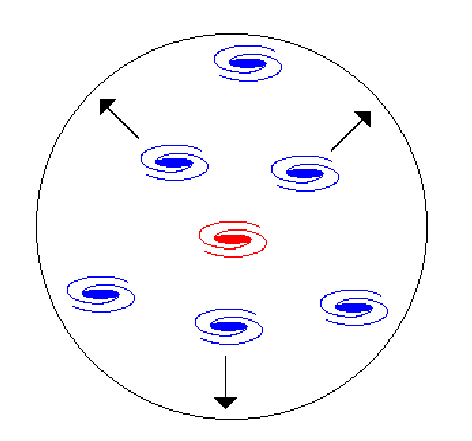For a long time it was supposed that the Universe was eternal and unchanging, with maybe a God driven creation. The theories of General Relativity and the Big Bang together implied a finite start to the Universe, and a Universe which was evolving and changing. To keep alive the theory of an unchanging Universe, Fred Hoyle proposed the steady state theory, He dealt with the expansion of the Universe by proposing the constant creation of new matter in the space between the Galaxies. This is not as crazy as it sounds. Matter is being created in empty space all the time. Most of these particles – so called virtual particles – annihilate each other, and it is as if they never existed, but there are some real physical effects. These virtual particles cause black holes to evaporate and eventually explode, according to a theory proposed by Stephen Hawking. The creation of new matter would not need to be very great - the amount needed would only be one atom per cubic meter per 100 years to match the expansion rate given by Hubble's constant – this rate of matter creation did not violate any observations.

There are many other observations which support the Big Bang theory over the steady state theory. The cosmic microwave background radiation cannot be satisfactorily explained by the steady state theory, but it is a prediction of the Big Bang theory, and as importantly, the big bang theory is consistent with the proportion of elements in the Universe, especially the proportion of helium, most of which was created in the Big Bang.
